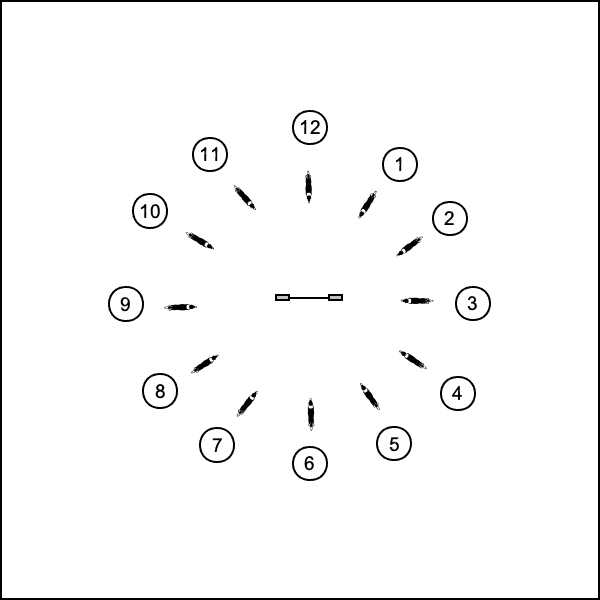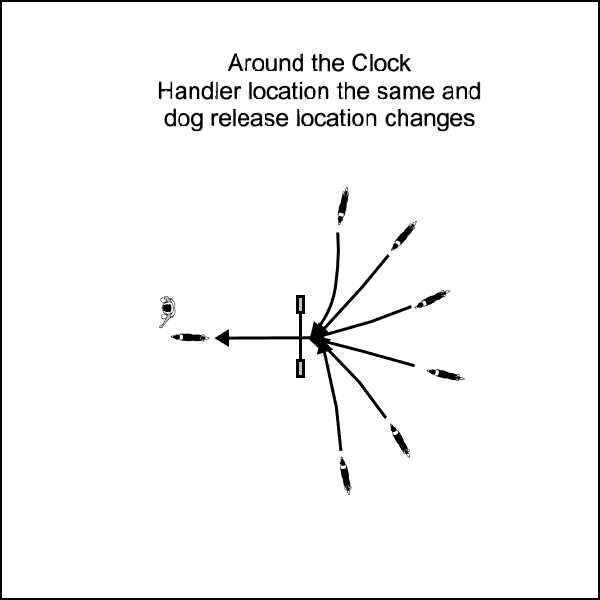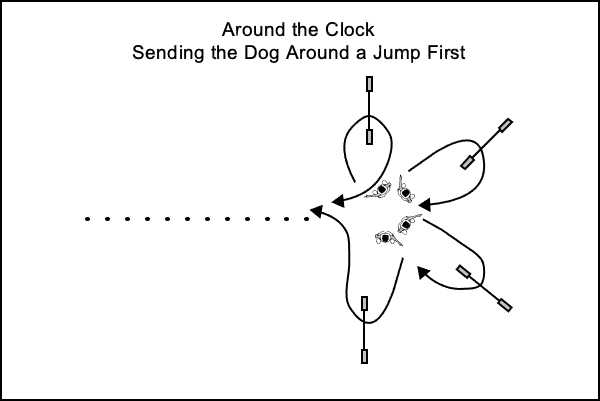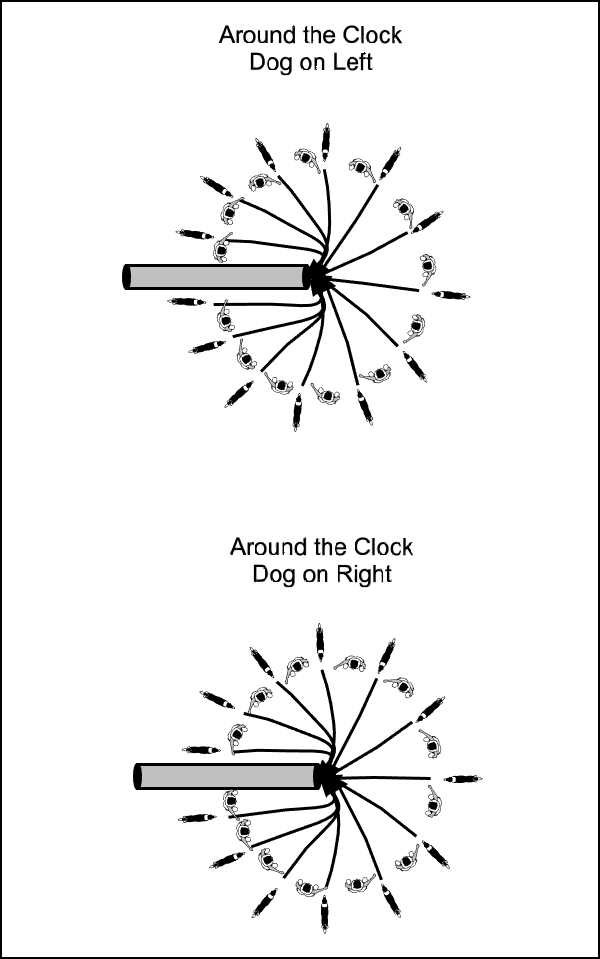Around The Clock/Around The World Training
06 Jun 2020
“Around the clock” or “around the world” training is an approach for systematically training and proofing the dog (and handler’s) ability to perform an obstacle from all possible approach angles. I’ve mostly heard/used “around the clock” since it reinforces the idea of the dog (and usually the handler) starting at a point on a clock face, performing the obstacle, and then moving to the next hour location on the clock face and repeating.
By gradually changing the approach angle the difficulty for the dog also increases gradually, allowing the trainer to identify when the approaches first start to become difficult for the dog. Also, the successes/rewards at the previous angles can be used to build a history of the correct behavior and the dog “gets it” when they transition to more challenging angles.
This type of training is often used for jumps, tunnels, weaves, and tables. It may also be used to help the dog learn to safely get on contacts (and possibly choose to jump off safely) for a range of approach angles.

Training Progression
- Generally, start with your dog in a straight on approach as your 12 o’clock.
- If you are working with your dog at your side, most handlers work their dog from the same side for all the clock locations. This is reinforces that the behavior for the dog (and cues/rewards for the handler) are the same at each location. Basically, less confusion than working both sides at each location.
- After success/reward, take a large step to the side to the next “hour” on the clock face (11 or 1 o’clock) and repeat the obstacle.
Repeat the above for as many angles of the clock as you desire.
Repeat at increasing distances. Generally starting closer (slower) and then increasing distance once for a set of clock locations.
Here’s a quick demo I put together of using this technique for a forward send/jump wrap of a jump and spread jump:
Variations
You need not use exactly 12 locations. The idea is to systematically work a wide range of approach angles.
This progression can also be used where the handler is not next to the dog and the dog is positioned at each clock location and released to the handler in a different location.

The dog need not be stationary at the start of the exercise. Cones or jumps/wings can be set up at (some of) the clock’s hour locations and the dog sent around/over them prior to the obstacle. Of course, adding speed increases the difficulty of the exercise.

The handler need not be stationary either, as long as your motion gives the dog the appropriate cues.
Jumps
You need only work half the clock when working with jumps. Once you move past the approach where the dog is at the edge of the jump/wing you are just repeating the same challenge as you performed on the other side of the jump. You could expect the dog to continue to take the the same side of the jump even though you are both on the opposite side of the jump, but then you’ve switched from training a forward send (for example) to training a back side.
Weaves/Tunnels
All clock angles and both handler sides are applicable to these obstacles. As shown below, these should include locations where the dog cannot see the tunnel entrance or start of the weaves (starting in those locations are also called “Finding the Entrance” drills).
Some things to think about with your cue combinations/handling system: Without additional handler cues which direction should the dog turn at the exit? Turning toward the side of obstacle where they started? What direction if they aren’t started at the handler’s side?

There are 13 “clock” positions shown in diagram, the number of positions isn’t important, but you do want to work the locations next to the tunnel/weaves from both sides for the most difficult challenges.
Contacts
While most agility organizations have rules about the maximum angled approach allowed for a contact, usually around 25-45 degrees depending on contact, trainers will use the around the clock method to train/proof the dog’s ability to safely get on the contact at a wider range of approach angles.
When working increased angles, I strongly recommend starting with a “travel plank” or low contact trainer to teach the approaches safely. You can add distance, speed, and preceding obstacles all without the need for contact equipment. Once all the angles are mastered at speed, distance and in sequence on the travel plank; you can progress to back chaining lowered contact obstacles, and work the angles. Again, going through the progression you used for the travel plank. Ultimately, working up to full height contacts.
Did I miss any other uses/examples of applying the “around the clock” approach to agility training? Please let me know!
If you enjoyed this article won't you please:  Thanks!
Thanks!
